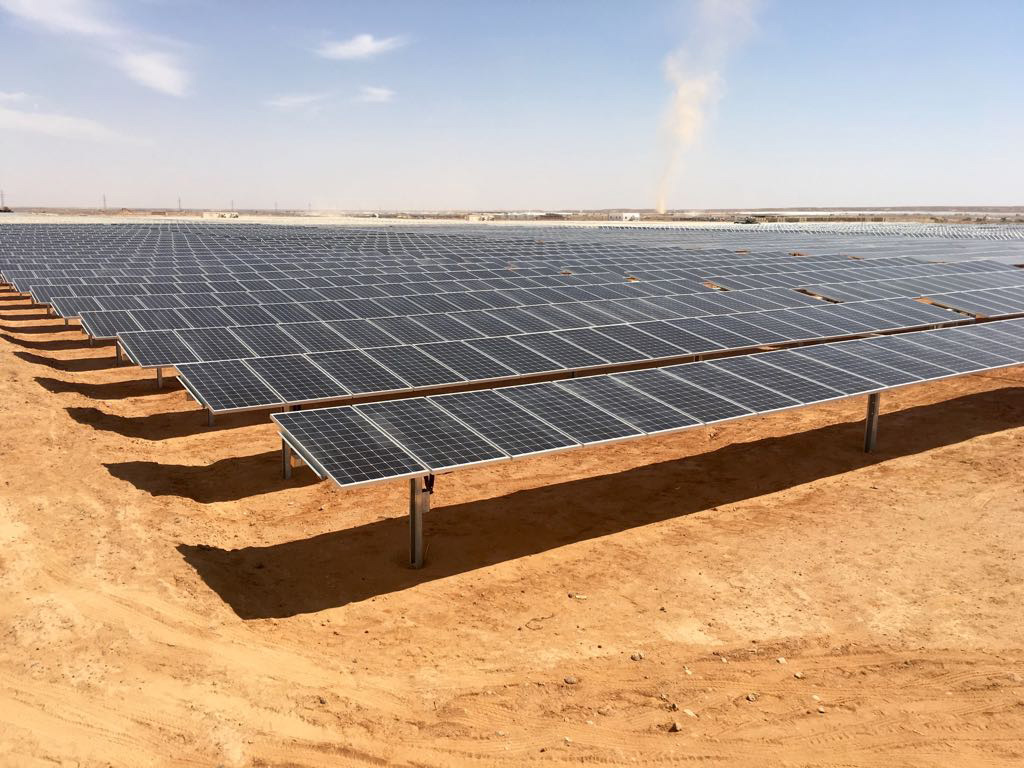Qatars Nebras Power, alongside partners Diamond Generating Europe (a wholly owned subsidiary of Mitsubishi Corporation) and KAWAR Group, a Jordanian company, have signed a finance agreement for Jordans 52.5 MW solar PV Shams Maan power plant.
The finance agreement is for 18 years and Nebras Power will own 35% of the project, Diamond Generating Europe 35% and Kawar Group 30%.
Present at the signing, which took place on January 18 at the prime ministry building in Jordans capital Amman, was Japans newly re-elected prime minister Shinzo Abe.
The financing of the project has been jointly overseen by a group of international banks and export credit agencies, including Japan for International Cooperation (JBIC), Nippon Export and Investment Insurance (NEXI), Mizuho Bank and Standard Charter Bank.
Commenting on the signing, Nebras Powers chairman Fahad Hamad Al-Mohannadi said: “Nebras Power continues with its commitment to expand internationally in a conservative manner while sticking to its core areas of expertise. The importance of this project comes from being the first project and investment for Nebras Power and it is a confirmation of the companys policy of diversifying the fuel in its future investments.”
Khalid M. Jolo, CEO of Nebras Power, added: “Nebras Power will strongly focus on building its portfolio in a balanced manner, which will include renewables.”
The 52.5 MW PV plant
The Shams Maan PV plant will be financed, owned and operated by Nebras Power, along with its partners.
Shams Maan Power Generation company has already signed a 20-year power purchase agreement (PPA) with the National Electric Power Company (NEPCO), which is Jordans publicly owned power transmission company. In July last year, the company signed an engineering, procurement and construction (EPC) contract with US-based First Solar, which will also supply the project with its advanced thin film PV modules.
Jordans solar PV success: one off or continuous?
The Shams Maan 52.5 MW project is the result of the first round of renewable energy auctions held by the Jordanian Ministry of Energy and Mineral Resources, which in total has approved 12 PV projects of various sizes and 200 MW cumulative installed capacity (the so-called round one or stage one auction has also approved two wind projects).
All 12 PV projects will sign a 20-year PPA with NEPCO at a price negotiated for each project separately. The ministry has set a ceiling for the tariff attributed to each renewable energy technology. In 2012, the ceiling tariff for the sale of electricity from solar PV and wind plants was $0.169 and $0.12 per kWh respectively. All round one PV plants have received the $0.169 per kWh tariff, apart from the 52.5 MW project, which received $0.148 per kWh.
Jordan is also running a second tender for the submission of expressions of interest under the direct proposal submission process (round two). The deadline for the second tender has since been postponed several times, with the latest deadline set on February 10, 2015. Round two, Jordans Minister of Energy and Mineral Resources Mohammad Hamed revealed, will consist of four 50 MW PV plants.
A preliminary list of qualified expressions of interest for PV projects and a list of conditionally qualified bids for PV projects under round two are published here. Both lists impress with the wide geographical scope of the bidders.
A third tender was launched in 2014 but the ministry later cancelled it altogether.
The Quweira 65 MW-75 MW plant
In November, Jordan's government announced that it had secured the Quweira site in the southern part of the country for the construction of a separate 65 MW to 75 MW PV plant. The energy ministry published a call for the submission of applications concerning the project's EPC contract prequalification. The deadline was December 18 and the ministry aims to select the prequalified application shortly, then invite the prequalified applicants to submit their tenders from March until May, finally selecting the successful bidder in July and the with a view to having the plant operational by April 2016.
The ministry notes, however, that “these dates are tentative only and are subject to receiving the applications in time, the number of applications received, the quality of the applications” and several other factors. Given the significant delays experienced with rounds one and two, the Quweira solar plant is expected to become operational much later.
Jordan has a target to install 600 MW of solar PV and 1200 MW of wind capacity by 2020. Electricity production in Jordan currently depends on imported oil and natural gas. In 2011, 97% of Jordans energy was imported and energy expenditure accounted for 20% of the country's GDP, the energy ministry said.
The January issue of the pv magazine featured an in-depth examination of Jordans energy sector and solar PV boom which analyzed the reasons behind Jordans energy investment rush.
This content is protected by copyright and may not be reused. If you want to cooperate with us and would like to reuse some of our content, please contact: editors@pv-magazine.com.


1 comment
By submitting this form you agree to pv magazine using your data for the purposes of publishing your comment.
Your personal data will only be disclosed or otherwise transmitted to third parties for the purposes of spam filtering or if this is necessary for technical maintenance of the website. Any other transfer to third parties will not take place unless this is justified on the basis of applicable data protection regulations or if pv magazine is legally obliged to do so.
You may revoke this consent at any time with effect for the future, in which case your personal data will be deleted immediately. Otherwise, your data will be deleted if pv magazine has processed your request or the purpose of data storage is fulfilled.
Further information on data privacy can be found in our Data Protection Policy.